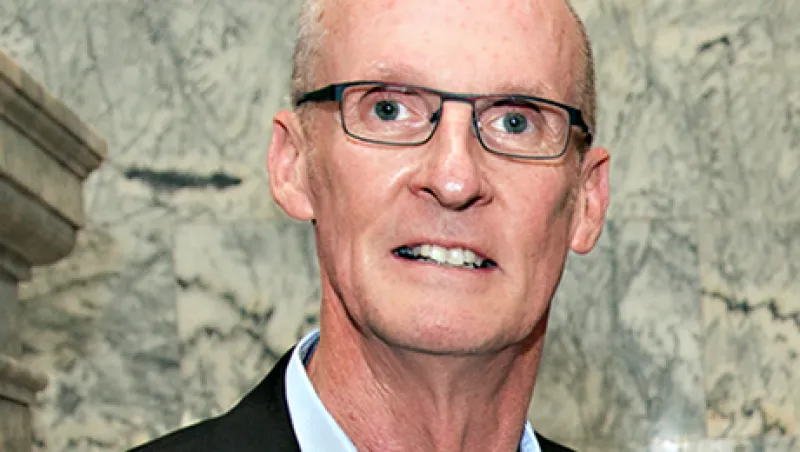John Powers, former president and CEO of Stanford Management Co., is back in the Big Apple. Powers, who announced his departure from the Palo Alto, California–based manager of Stanford’s $25 billion endowment and trust assets last November, has moved to New York to head a new initiative at Credit Suisse Asset Management, a $421 billion division of Credit Suisse Group. As co-head of hedge funds, Powers will launch a strategy that invests in the equity of hedge fund managers.
Raising capital to invest in the hedge fund firms’ general partners is an idea that Powers says he’s been thinking about for some time. He realized that “it is a strategy that is best pursued in partnership with a bank, because of the range of relationships that a bank has.” When Powers found out that Credit Suisse was looking to launch such an effort and needed someone to run the business, it seemed like the perfect fit.
The details of the new strategy are still being finalized, but the CSAM fund will take equity stakes in established hedge fund firms. Zurich-based Credit Suisse is not alone in doing this: Blackstone Alternative Asset Management and Goldman Sachs Asset Management have similar funds. In 2009, New York–based asset manager Neuberger Berman launched Dyal Capital Partners, which takes minority positions in alternative-investment firms and has $4 billion in capital. Dyal’s investments to date have included stakes in U.S. hedge fund firms Blue Harbour Group, Jana Partners, MKP Capital Management and Whitebox Advisors.
Powers, 62, grew up on the East Coast and earned a bachelor's degree from Cornell University in Ithaca, New York. He worked in Manhattan before receiving his MBA from Stanford in 1983, and he’s lived in the Bay Area ever since. After stints with technology and communications firms, Powers joined Robertson Stephens, a San Francisco–based boutique bank, as an equity analyst. He rose to head of research there before joining Offit Hall Capital Management, now Hall Capital Partners, the San Francisco–headquartered outsourced CIO firm founded by Katie Hall, as research head. Stanford Management appointed him president and CEO in 2006. Now, Powers says, he’s excited to come back east.
A big reason firms like Credit Suisse see an opportunity to raise funds to invest in hedge fund businesses is that U.S. banks, which used to be the most natural minority investors for such asset managers, can no longer play that role. Thanks to regulatory limits, under the so-called Volcker rule, on how much equity a U.S.-based bank can have in hedge funds and private equity — as well as the need for greater balance sheet liquidity — banks are much less willing or able to invest in hedge funds.
At the same time, alternative managers need investment partners. Although banks themselves might not be able to invest, they have a network of institutional and private wealth relationships through which they can raise limited-partner capital.
For institutions, including pension plans, foundations and endowments, investing in the equity of an asset management firm makes a lot of sense. As long-term investors, they’re well positioned to provide the type of locked-up capital that is needed, and they’re profiting from a business they would typically be paying fees to as an LP. Investing directly in a hedge fund manager’s equity, as the Teacher Retirement System of Texas did in $169 billion Bridgewater Associates, can be problematic owing to the potential for conflicts of interest. Powers believes that for institutions the commingled fund is a better approach. “This is one area where the LP relationship makes sense,” he says.
Powers will find a New York City that is not so far along the curve when it comes to the new technology boom and the sharing economy, with fewer robot cars and app incubators than his adopted home of the past 30 years. But the bagels are still better.






